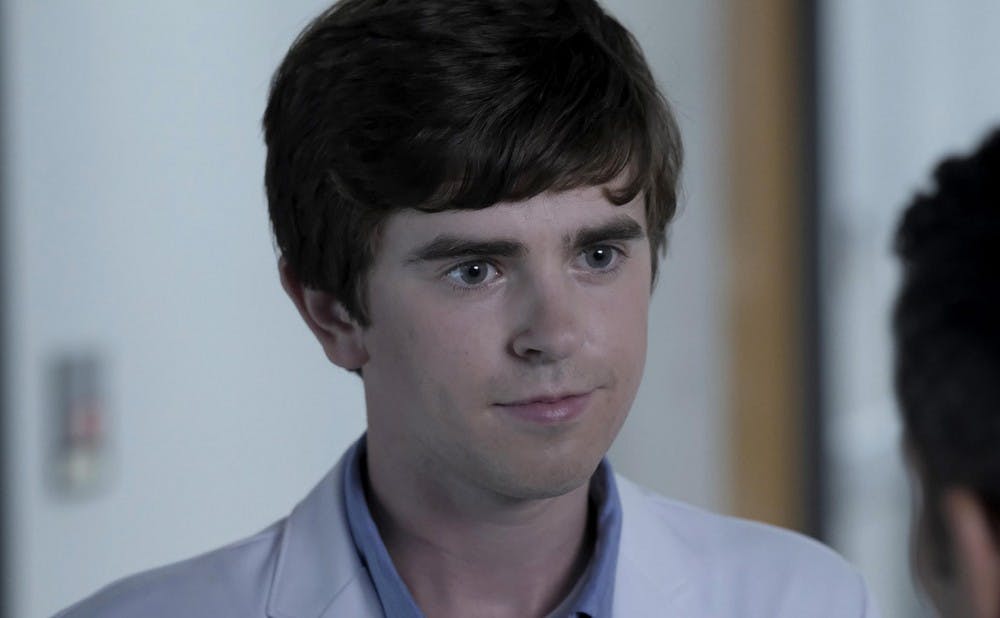“The Good Doctor” is the kind of show people like to call a “guilty pleasure” — a term I object to. It’s broad, predictable and epically sentimental, schmaltzy even. The show, which follows Shaun Murphy (Freddie Highmore), a brilliant surgical resident with autism and savant syndrome, plays like a typical medical procedural, complete with impossibly attractive doctors, a pristine hospital and a vaguely emotional pop score. It is also the time slot’s most-watched broadcast program in the last 11 years. All that’s to say, “The Good Doctor” has the makings of televised comfort food, like “This is Us” if the Pearson clan never made it out of that hospital.
I genuinely and unironically enjoy the show, which means I’m supposed to praise it in coded language, refer to it as my “guilty pleasure.”
It is a term I struggle to fully understand, mostly because I’m confused as to where the guilt comes from. The idea that we, as consumers of art, are expected to apologize for or qualify our enthusiasm for work considered “lowbrow” seems horribly inauthentic. The theater of “The Real Housewives” isn’t exactly comparable to that of Shakespeare or Marlowe or even Mamet, but that doesn’t mean it should be reflexively dismissed as if the sanctity of one’s good taste depended on a thorough tongue-thrashing of all things unfashionable.
And even if you believe the above paragraph revolves around an utter falsehood and fancy yourself a cultural gatekeeper entrusted with extracting apologies from lovers of “low art,” I would pose one last question: How does one discern what moves someone else? Sometimes, we cannot even determine these things for ourselves. That swelling in the chest brought on by the smallest detail — the irregular curvature of a brush stroke, the overwhelming hope of a book’s final sentence or something in a television show that deeply resembles life — is unquantifiable. There is no objective measure for the way art affects us.
When I watch “The Good Doctor,” I can’t help but see traces of a familiar community, traces of nurses and doctors and x-ray technicians, a collection of faces I’ve gathered up during the 16 years since I was diagnosed with a genetic heart condition. Each time I landed in the hospital, I met new medical professionals and marveled at their kindness. No overwhelming cynicism or addiction or compulsion. No Gregory House. Just the bald 30-something nurse who stayed up with me late at night, talking of movies or music or how I felt. Just the broad-shouldered surgeon who operated on me when I first arrived, peeking in when I finally woke up, saying little, mostly smiling. Just my longtime cardiologist — known-me-since-I-was-five longtime — stopping by to rest a comforting hand on my parents’ tired shoulders and joke with me like nothing had happened.
In his review of the show, critic James Poniewozik writes, “While there may be different ways to be good and to express caring, ‘The Good Doctor’ suggests, it is something worth aspiring to — an idea that may especially appeal to viewers who have experienced health care as scary, impersonal and alienating.”
In my experience, the opposite case is true. Shaun Murphy and his fellow hospital employees truly care for their patients. They’re not anti-heroes or villains but friends and teachers and, most of all, people who become part of a community. In them, I saw my own doctors, nurses, surgeons. And, again, their kindness moved me. My positive healthcare experience informed the way I absorbed the show.
I remember waking up one night during one of those hospital stays. In my room, the lights were dim and the machines hummed, monitoring my pulse and injecting antibiotics. Whoever was there with me had stepped out, but I was unafraid. The glow from the fluorescent lights above the nurses’ station seeped in just over the curtain. I was aware of the community, there in the hospital, and my place in it. I felt safe.
When I watch “The Good Doctor,” I’m aware of the formulaic narrative and the abundant schmaltz, but I’m also aware of memories like those, churned up by the show’s deeply earnest depiction of a medical community fixated on doing the right thing, caring for its patients. It doesn’t matter whether we term it high art or low art; what is evoked, for me, is the same. Perhaps Poniewozik is right, and those who’ve had poor experiences with the impersonality of healthcare would take comfort in the show — like watching “The West Wing” during a Trump presidency. But “The Good Doctor” moves me because of the real people and real experiences it reminds me of, and I doubt I’ll ever feel guilty about that.
Get The Chronicle straight to your inbox
Signup for our weekly newsletter. Cancel at any time.

